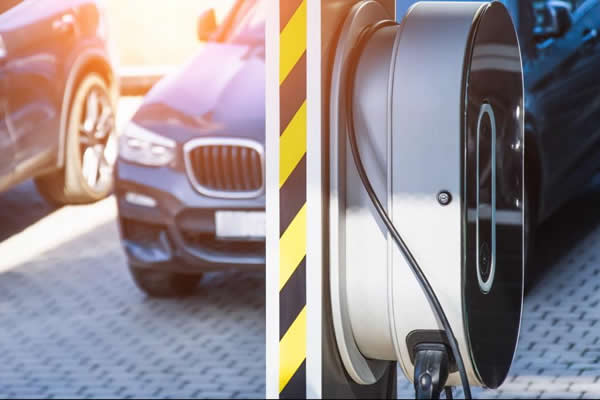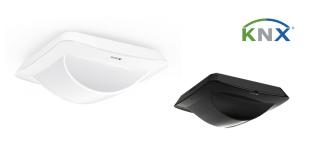From the photovoltaic system to the charging station to the electric vehicle: intelligent, safe and cost-saving control of charging processes with KNX energy management
For the European Commission, electromobility is a crucial pillar on the way to an emission-free economy in 2050. It can make road traffic and transport cleaner and cheaper. But it can only make an effective contribution to climate protection if the required energy is obtained from sustainable sources. It is also important to use energy as efficiently and sparingly as possible. This is exactly where KNX comes in.

Seamless integration of charging stations in smart buildings
E-mobility becomes more and more popular: Over 8.5 million electric vehicles are already sold worldwide every year – most of them still in Asia. But the electrification of transport is also increasing in other important markets such as North America and Europe. The global market is expected to grow to 27 million electric vehicles by 2030. When it comes to climate protection, the clean and efficient charging of all these vehicles moves into focus and thus KNX. As the world’s leading technical standard for building automation, KNX enables the seamless integration of charging stations for electric vehicles into the energy management of smart buildings. In this way, KNX builds a pioneering bridge between the worlds of e-mobility and building automation.
One energy management system suffices to control multi-point charging stations from various manufacturers
The basis for this is KNX technology for an optimal, secure interaction of all devices, installations and charging stations in smart homes and buildings, as well as the ETS tool for smooth configuration and commissioning. The solutions based on these KNX technologies include, among others, “SMART CONNECT KNX e-charge II” from ise GmbH and “EibPC²” from Enertex Bayern GmbH. They make it possible for their users to use their own sources of power generation via KNX, such as photovoltaic systems, for charging electric vehicles by intelligently integrating the charging stations into the KNX energy management system of the smart home or building. Up to five different charging points from various manufacturers can be connected to the same system.
Using clean energy efficiently and sparingly for e-mobility guarantees stability in the local network and the grid
The charging current and charging processes are managed in a manner which considers the current electricity consumption so that other running devices and installations in the building, such as the washing machine, oven or air conditioning, are not impaired. It is also possible to prioritise certain charging points so that the vehicle that is needed promptly is charged as quickly as possible. Even weather data and forecasts can be included in the control of the charging processes. If less energy is available due to weather conditions or during the night via photovoltaic systems, the charging processes are regulated accordingly so that no additional electricity has to be obtained from the regional electricity provider. That will reduce costs.
A gain for climate protection
“In addition to electrified vehicles and charging stations, technologies that enable e-mobility to be safely, easily and, above all, seamlessly integrated into existing infrastructures and thus our everyday life are also decisive for its success. In this respect, KNX is a key player in the field of smart homes and buildings and provides the technological foundation for using electromobility effectively for climate protection by combining power generation from renewable sources with intelligent energy management and the connection of charging stations from various manufacturers”, explains Franz Kammerl, President of the KNX Association.












